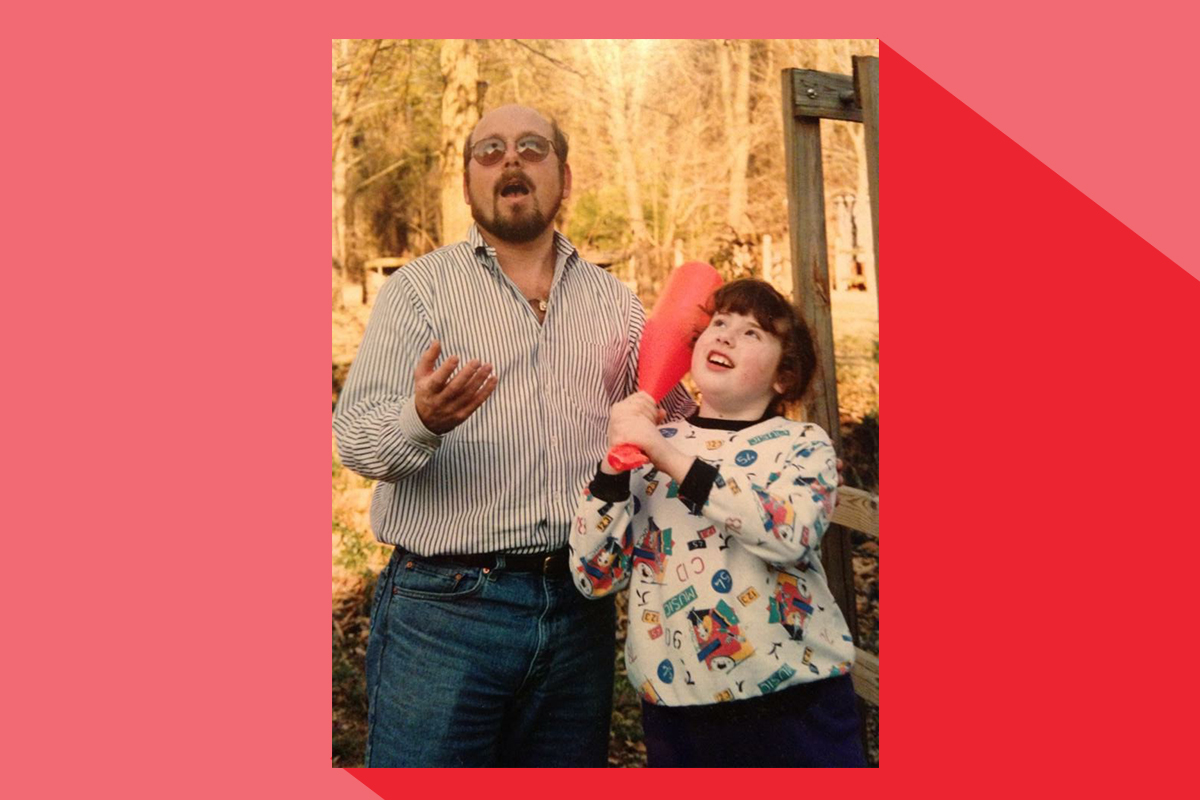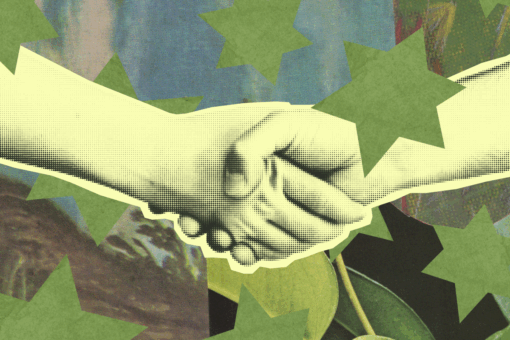“They found your father” was all my mother said, voice breaking. In that instant, my world shattered. My father died by suicide in May 2012. I was utterly unprepared for what this loss would do to me, to my family, and to my relationship with Judaism.
My dad was my complex hero. He kept secrets that affected our family for years. But he was also my greatest cheerleader and teacher. I was so in shock to hear he was gone, at first it didn’t register. It wasn’t until later that day that I learned he had died by suicide. A wave of shame enveloped me. I was a school psychologist in training and I had failed to detect my father’s plan.
I woke up the next day to fly home to Kentucky and couldn’t stop crying. I felt like I had failed him in life, so I wanted to make sure I didn’t let him down in death. But I had no idea how to give my father a Jewish funeral. As a patrilineal Jew, my dad taught me everything about being Jewish, except for how to grieve. When my dad’s parents died, their funerals weren’t explicitly Jewish. We said Kaddish once a year for his parents but that was the end of it. Through his death, however, my father taught me about what it means to grieve Jewishly.
In the days following his death, I had covered the mirrors and my leg hair was growing longer by the day. I had read about male family members growing out their beards when a parent died, and while my then husband was observing this for me, I wanted to participate in this in any way I could. My reading at the time showed so many traditions that were followed by men, like saying Kaddish or not shaving. I felt like my mourning meant less because I was a woman. However, even minor observances felt like indulgences. There were papers to write and missing a week of summer classes would have been like missing a year.
Besides, my family had never sat shiva, something I’d only heard about in passing or seen on TV. I imagined myself, sitting alone in my apartment in the aging armchair, waiting for people to visit me. I would have to sit with my loss and feel it. I would have to be taken care of by a community. My community consisted of the few people I’d met at my new temple and my graduate school cohort. What if no one came? I didn’t want to be around my grief; why would they? Sitting shiva would mean that this was real and had a real effect on me. I’d have to wrestle with my loss and allow myself to be changed by it.
I wanted none of that. I wanted to be normal. I uncovered the mirrors, shaved my legs, and ferociously dove into life as if nothing had happened.
But still, I was angry. I was angry at my dad, angry at God, and angry at myself. Rather than deal with the anger, I displaced it onto my Judaism. I spent hours on the internet reading about what I should have done. I should have sat shiva. I should have gotten a minyan to say Kaddish every day. I should have avoided plays and concerts. I had done it all wrong and could never make it better.
A year went by, and my anger transformed into shame. I was ashamed that I still wanted to stand for Kaddish during services even though I wasn’t technically a mourner anymore. When my therapist suggested I have a delayed day of sitting shiva, I felt ashamed that the idea seemed like a relief. More than anything, I was ashamed that I was a Jew who had failed to honor her father because she was too busy when it was appropriate.
“It’s exactly what he would have wanted,” my aunt texted along with a photo from the headstone unveiling. It was an imperfect ritual, two years after his death, and I still couldn’t let myself stop life to attend. I was in my last semester of my school psychology internship and was too afraid to ask for time off. I didn’t want to be seen as needy or like I wasn’t mature enough to enter my dream profession. I wish I’d known how much I would regret not attending. Years of uncried tears were stuck in my throat. The sadness of missing yet another ritual knocked the composure out of me.
By that time, I’d begun allowing more Jewish ritual into my life again. It was becoming a way to connect with my father. Sadness tempered the joy of Shabbat candles. Shalom Rav left a hitch in my throat. Kaddish was almost unsayable by the end. But that sadness allowed me to chip away at shame. I learned to speak up about my loss. I drew close to communities new and old. I let them know me, complicated grief and all. I told happy stories of my father alongside the heavy ones. I began to cry in front of others and accept their care. I started to make my grief speakable through everyday rituals, but I still found myself at a loss when his yahrtzeit — the anniversary of his death — arrived each year.
I wanted more than lighting a candle and saying Kaddish by myself. I was ready. I wanted a ritual that included my community.
On my father’s yahrtzeit for 2019, my apartment was warm with close friends. None of them had ever met my dad, and I felt excited to “introduce” him to them. Jackson Browne’s “Lawyers in Love” played softly in the background. As the sun set, I lit the candle and said Kaddish, joined by the other Jews in attendance. I read a section from Jewish Insights on Death and Mourning along with my favorite pre-Kaddish reading. And then we watched a comedy speech that my dad had made about Yiddish at my grandmother’s 85th birthday. My dad would talk about Yiddish and comedy at the drop of a hat. He loved an audience.
As my dad’s booming voice mingled with my friends’ belly laughs, I realized this was the ritual I needed right then. In creating it, I felt inspired by tradition rather than bound by it. What I had thought were strict rules — the “right” way to grieve — were really traditions holding space for me. Instead of scolding strictures, these rituals were tools of healing. Like my father, my relationship with grief and tradition will always be complex. That complexity allows curiosity and comfort to hold space for grief to speak when it is ready.
Image courtesy of the author.



